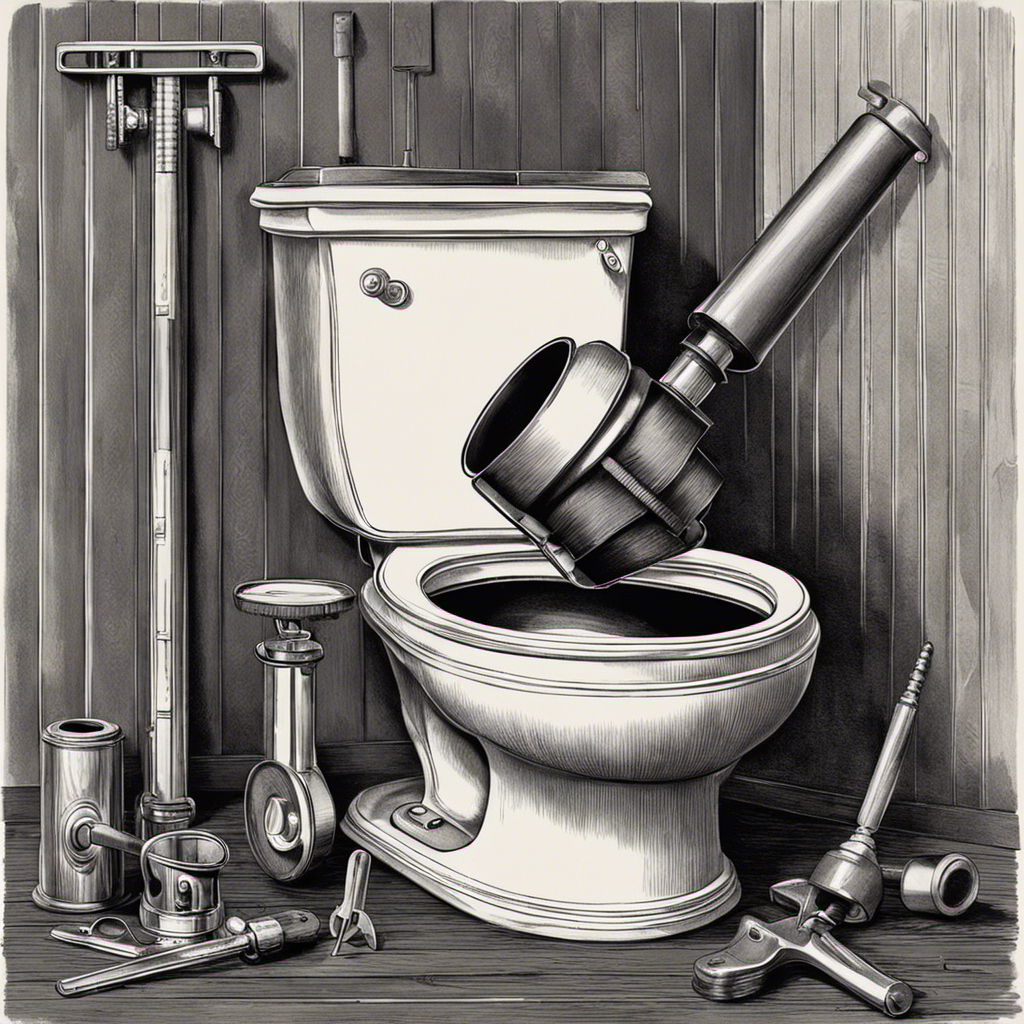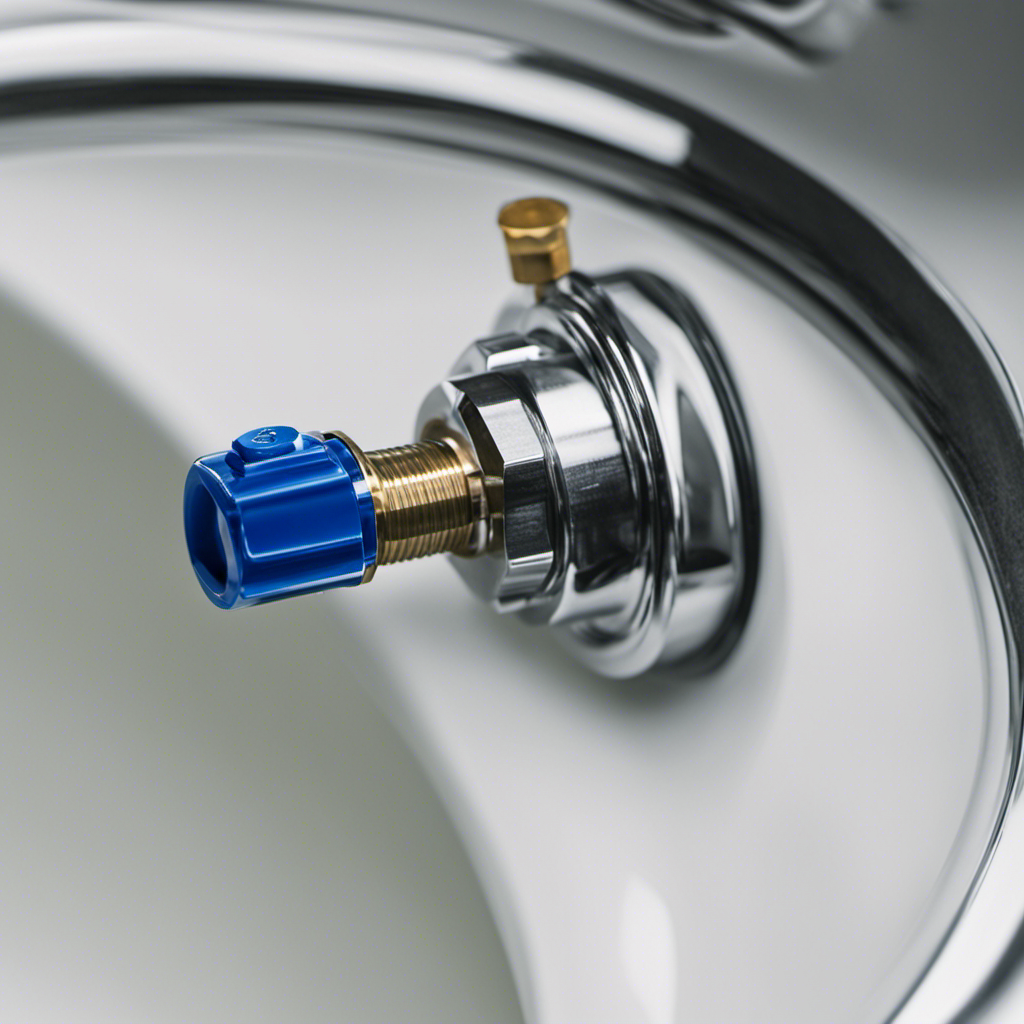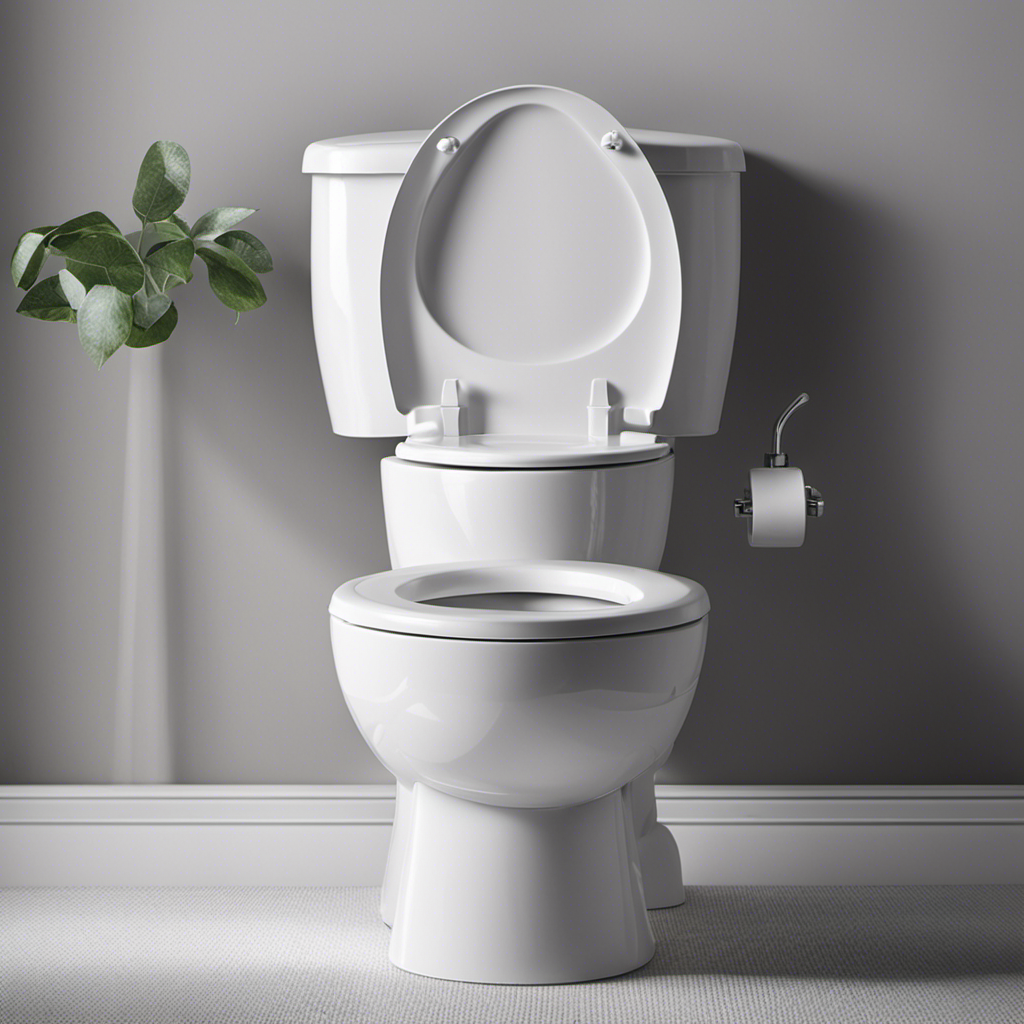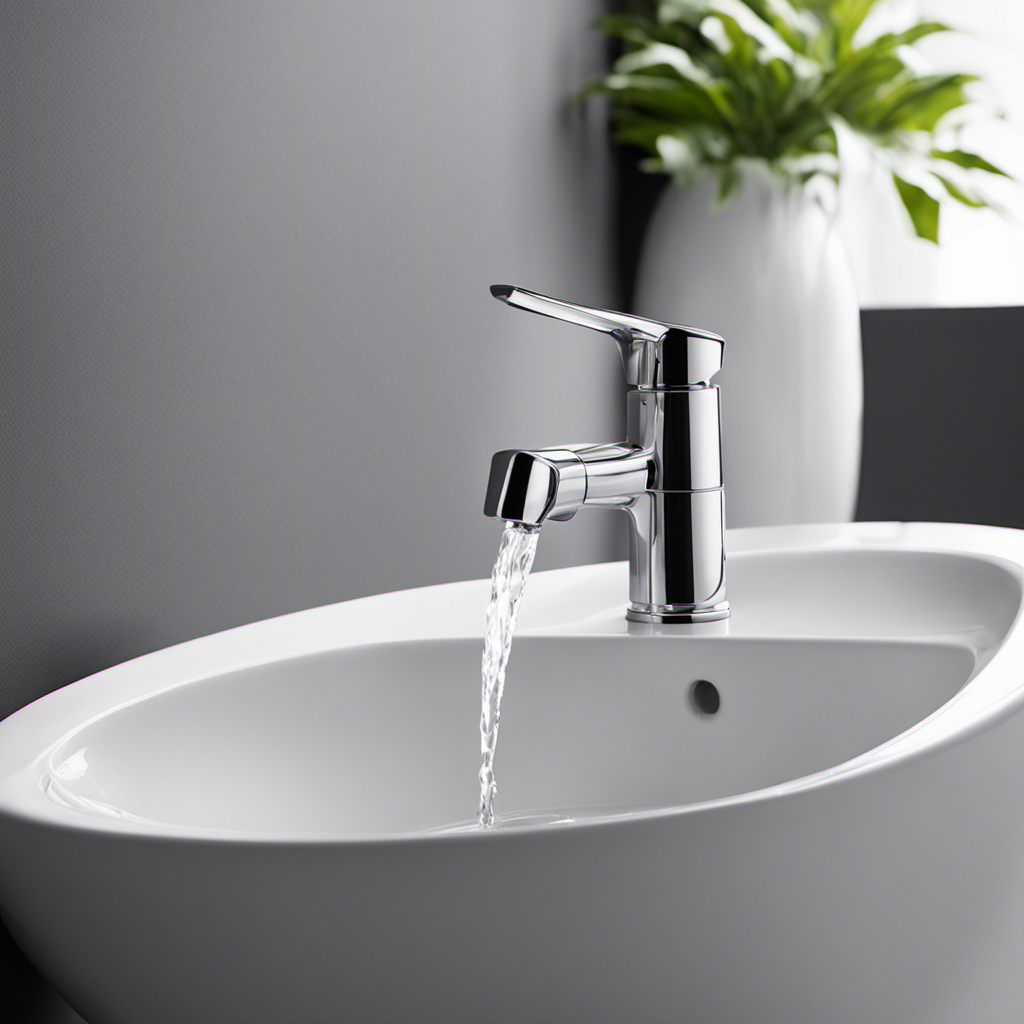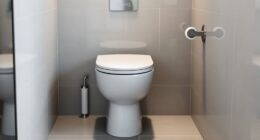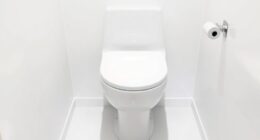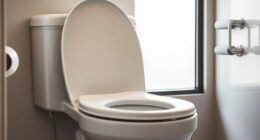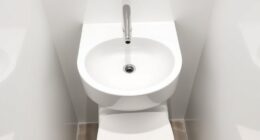Is your toilet flushing slower than molasses? Don’t panic! Troubleshooting a slow flushing toilet is easier than you think.
In this article, we’ll explore DIY solutions to common issues that cause a sluggish flush. From partial clogs in the drain to damaged flappers and clogged rim jets, we’ve got you covered.
So grab your plunger and get ready to dive into the world of toilet troubleshooting. You’ll be back to a fast and furious flush in no time!
Key Takeaways
- Slow flushing toilet bowls are often caused by partial clogs in the drain, which can be created by non-flushable objects like baby wipes and Q tips.
- Unclogging methods such as using a toilet plunger, toilet auger, dish soap, or Epsom salt can help dissolve clogs and improve drainage.
- A leaky toilet flapper is a common cause of slow flushing toilets and can be fixed by replacing the flapper.
- Clogged rim jets, which are small holes under the toilet bowl rim, can also lead to slow flushing and can be cleaned with a toilet brush or DIY toilet auger made from a wire hanger.
Partial Clogs in the Drain
A slow flushing toilet bowl indicates a partial clog in the drain. This can be caused by non-flushable objects like baby wipes and Q tips creating a gelatinous mass that blocks the drains.
To tackle this issue, there are DIY tools and prevention tips available. One can use a toilet plunger to dissolve the clogs in the siphon jet or close to it. Another effective tool is a toilet auger, a long metal tool with a spiral tip that breaks clogs effectively. Additionally, dish soap can be used to help hard waste slide through the outlet drain and into the sewer.
Prevention tips include proper flushing of non-dissolvable items and avoiding the disposal of non-flushable objects in the toilet. By following these tips and using the right DIY tools, one can successfully address and prevent partial clogs in the drain.
Unclogging Methods
The toilet plunger is a commonly used tool to dissolve clogs in the siphon jet or close to it. DIY unclogging techniques can save you time and money when dealing with a slow flushing toilet.
Here are some natural remedies for clogs that you can try:
-
Dish soap: Adding dish soap to the toilet bowl helps hard waste slide through the outlet drain and into the sewer.
-
Epsom salt: Epsom salt is effective in dissolving clogs, especially organic waste. However, it may not be suitable for non-organic waste.
-
Unclogging solutions: Various unclogging solutions are available in the market. Choose the one that works best for your situation.
-
Toilet auger: A toilet auger is a long metal tool with a spiral tip that breaks clogs effectively.
Damaged Toilet Flapper
Damaged fill valves can lead to insufficient water in the toilet tank, resulting in ineffective waste elimination. One common cause of this issue is a leaky toilet flapper. The flapper is responsible for regulating the flow of water during each flush. When the flapper is damaged, it can hinder the flush system’s ability to effectively clean waste.
To repair a leaky flapper, the first step is to close the water supply to the toilet using the shutoff valve. Next, remove the toilet tank lid and flush to remove any remaining water. Detach the old flapper and clean the flapper seat area with rubbing alcohol. Finally, install a new flapper by snapping it onto the base and test the flushing toilet to ensure proper functioning.
Troubleshooting common toilet flushing issues includes checking for a damaged flapper and replacing it if necessary.
Steps to Change the Flapper
Closing the water supply to the toilet and removing the lid, one can flush the toilet to empty the tank before proceeding to detach the old flapper. Regular toilet maintenance is essential to ensure proper functioning and prevent costly repairs.
Here are the benefits of regular toilet maintenance:
- Extends the lifespan of the toilet
- Prevents clogs and slow flushing
- Saves water and reduces utility bills
- Maintains hygienic and odor-free bathrooms
Common signs of a faulty flapper:
- Continuous running of water in the toilet bowl
- Incomplete flush or weak flushing power
- Water leakage around the base of the toilet
- Excessive noise during flushing.
Clogged Rim Jets
Cleaning the rim jets with a toilet brush can effectively improve the flushing of the toilet bowl. Rim jets are small holes located under the toilet bowl rim that enable proper flushing. Over time, these jet holes can become clogged with hard water deposits, resulting in slow flushing.
Although not visible from above, the clogged rim jets can be noticed when squatting. To clean the rim jets, a toilet brush can be used. Simply insert the brush into the jets and scrub away any buildup. This cleaning technique will help to improve the flow of water and prevent future clogs.
Regularly cleaning the rim jets is a preventive measure that ensures the toilet functions properly and avoids any potential issues with slow flushing.
Broken Fill Valve
After addressing clogged rim jets, the next potential culprit for a slow flushing toilet is a broken fill valve.
The fill valve is responsible for controlling the amount of water in the toilet tank, ensuring that there is enough water to effectively eliminate waste from the bowl. However, due to its plastic composition, the fill valve is prone to wear and tear over time.
If the fill valve becomes damaged or broken, it can result in insufficient water flow and a sluggish flush. To resolve this issue, the fill valve needs to be replaced. This can be done by turning off the water supply, removing the old valve, and installing a new one.
Testing the flush after installation is essential to ensure proper functioning. Proper maintenance of fill valves, such as regular cleaning and inspection, can help prevent future issues.
Cracked Toilet Bowl
Mild kicks and temperature fluctuations can cause cracks in toilet bowls, leading to leakages and slow drainage. When a toilet bowl is cracked, it is important to replace it as there is no way to repair it. There are several signs that indicate a cracked bowl. Puddles or wet walls around the toilet are common indications of a leak. Slow drainage is another sign, as water may struggle to exit the bowl efficiently. In some cases, hairline cracks may go unnoticed until these symptoms appear. To address this issue, a new toilet bowl must be installed. However, it is worth noting that replacing a toilet bowl can be a more time-consuming solution compared to other troubleshooting tips.
| Signs of a Cracked Bowl | |
|---|---|
| Puddles or wet walls | Slow drainage |
Other DIY Solutions
Using common household items, individuals can effectively address clogs in their toilet. Here are some DIY solutions to troubleshoot a slow flushing toilet:
-
Toilet Plunger: A plunger can be used to dissolve clogs in the siphon jet or close to it. It creates pressure that dislodges the blockage and allows water to flow freely.
-
Toilet Auger: A long metal tool with a spiral tip, the auger breaks clogs effectively. It reaches deep into the drain to remove stubborn blockages.
-
Dish Soap: Adding dish soap to the toilet bowl helps hard waste slide through the outlet drain and into the sewer. It acts as a lubricant, aiding in the unclogging process.
-
Epsom Salt: Epsom salt dissolves clogs, especially organic waste. However, it is not suitable for non-organic waste. It can be a useful homemade drain cleaner.
Frequently Asked Questions
Can I Use a Chemical Drain Cleaner to Unclog My Toilet?
Using a chemical drain cleaner to unclog a toilet is not recommended. It can cause damage to the toilet and pipes. Instead, try using a toilet auger, which is a more effective and safer method.
Is It Possible to Fix a Damaged Flapper Instead of Replacing It?
Yes, it is possible to fix a damaged flapper instead of replacing it. Toilet repair techniques such as cleaning the flapper seat area and using rubbing alcohol can help restore its functionality.
How Often Should I Clean the Rim Jets of My Toilet Bowl?
Cleaning the rim jets of a toilet bowl should be done regularly to ensure proper flushing. While vinegar is effective in cleaning, using a toilet brush and a wire hanger as a DIY toilet auger can also improve effectiveness.
Can I Use a Plunger to Fix a Broken Fill Valve?
No, a plunger cannot fix a broken fill valve. It is not an effective solution. Instead, alternative fixes for a broken fill valve include turning off the water supply and replacing the valve.
What Are Some Signs That Indicate a Cracked Toilet Bowl?
Signs of a cracked toilet bowl include water leakage, puddles, and wet walls. Unfortunately, there is no repair for a cracked bowl; it must be replaced. Toilet bowl replacement can be time-consuming but necessary to prevent further damage.
Conclusion
In conclusion, troubleshooting a slow flushing toilet can be a simple and cost-effective task with the right DIY solutions.
By identifying common issues such as partial clogs, damaged flappers, clogged rim jets, broken fill valves, and cracked toilet bowls, homeowners can take the necessary steps to resolve these problems.
Whether it’s using a plunger, toilet auger, or DIY solutions like dish soap and Epsom salt, there are various methods to unclog drains and improve water flow.
Remember, prevention is key, so avoid flushing non-flushable objects to maintain a properly functioning toilet.
Happy troubleshooting!
